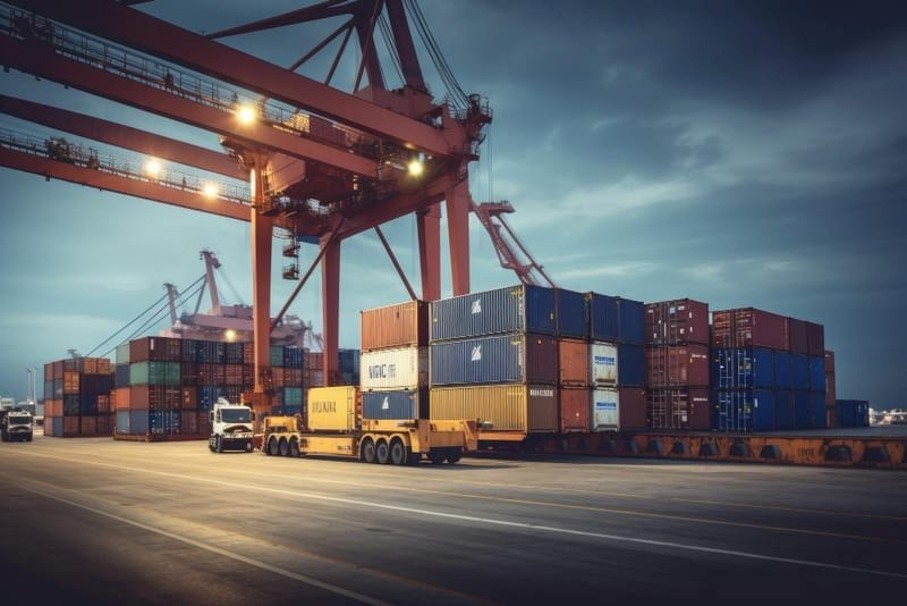Government/Policy

May 10, 2025
Leibowitz: The UK trade agreement, a template for future trade deals?
Written by Lewis Leibowitz
The US and UK governments on Thursday announced an “agreement in principle” between the two countries that will reduce or eliminate tariffs that affect almost all other countries.
The deal, assuming it is finalized in the next few weeks, will provide some relief for the US equity markets. It may also provide a hint about other possible agreements between the US and other trading partners. Those implications are worth examining. But there is no certainty yet.
Preliminary discussions in Geneva with Chinese officials over the weekend may also give more hints as to the direction of the administration’s trade goals and methods.
First, a brief recap is in order
The tariff barrage began with new taxes on imports from China, Canada, and Mexico in February. The Trump administration linked them to the flood of illegal drugs (and the precursors for them) from these countries.
Rapidly, the tariffs levied on China increased from 10% to 20%. And then, in retaliation to Chinese retaliation, the US lifted tariffs on China to 145%. That’s where they remain today.
Canada and Mexico received a reprieve for imports into the US that comply with USMCA origin requirements. That easing of tariffs turned the temperature down a bit.
But then, in early April, “reciprocal” tariffs were imposed on imports from virtually all countries. That turned the temperature way up.
Just as rapidly, the Trump administration announced it had suspended the tariffs on 57 countries for 90 days. The suspension applied to those nations Trump had hit with tariffs of more than than 10%. The result: All countries now have a minimum 10% tariff on the vast majority of imports.
That turned the temperature back down again.
And yet, additional tariffs on steel, aluminum, and their derivatives also apply to most countries. Remember that Trump on March 12 nixed previous international agreements replacing tariffs with quotas.
The UK agreement, which is not yet finalized, promised to develop an alternative arrangement on steel and aluminum. Based on this assertion, it appears that steel and aluminum imports from the UK could eventually be free of Section 232 tariffs.
There was no timetable given for the completion of the agreement.
A template for other trade deals?
The summary of the tentative deal does not mention value-added taxes, which have been a key driver of the reciprocal tariffs above 10%. Britain has a substantial VAT of 20% that is applied to most goods and services.
The US, controversially, claims that VAT rebates on exports and the imposition of VATs on imports are a trade barrier than injures the US. Almost all the countries in the world, except the US, have some form of VAT. But the absence of a VAT in the US means that no taxes are refunded for exports, while they are imposed on imports. It appears, at least for now, that the UK will continue to impose VATs on imports from the US. But we’ll see how that goes.
While Britain is a major US trading partner, it is no longer the largest. (It once was.) In 2024, the total volume of trade between the two countries was $148 billion. That places the relationship in eighth place – behind Mexico, Canada, China, Germany, Japan, South Korea, and Vietnam.
Nevertheless, the UK deal may signal relaxation of the heaviest tariffs. The suspension of the reciprocal tariffs greater than 10% – remember, 57 countries were hit with that – ends on July 9. But it could be extended. If more deals like the one with the UK are struck, the suspensions may continue to permit more agreements – relieving global markets of considerable worry.
Stockholm syndrome, Trumpian variant
The Trumpian method of negotiating has proven predictable: Shock the world with vastly greater demands than were expected. And then ease them. You leave tariffs (or other measures) greater than before in place. But you also leave trading partners relieved that the worst possible outcome did not happen. It’s something like Stockholm syndrome.
In keeping with this strategy, the 10% reciprocal tariffs appear to remain even on Britain, vastly exceeding the tariffs before January 20, when Trump was inaugurated.
This suggests that the president will try to keep the 10% tariffs as a baseline for everyone. Whether that happens depends on many unknowns, including the negotiating skill of our trading partners and the courts in the United States.
Keep an eye on the courts
The reciprocal tariffs are based on the International Emergency Economic Powers Act (IEEPA). The statute authorizes the president to act in response to a declared national emergency. The “emergency” was the existence of large and persistent merchandise trade deficits. And the remedy chosen was tariffs.
Both the emergency (merchandise trade deficits have been around for half a century) and the remedy (the IEEPA statute does not expressly authorize tariffs) are legally controversial. That could result in court decisions against the president.
While litigation is always a risky business, some trading partners may string out negotiations while more than a dozen cases challenging the tariffs play out in US courts. The first injunction hearing in one of the cases is scheduled for Tuesday at the Court of International Trade in New York City.
The stakes could not be much higher, for the allocation of power between Congress and the president, for the future of international trade, and for the outlook for the American (and global) economies.
Editor’s note
This is an opinion column. The views in this article are those of an experienced trade attorney on issues of relevance to the current steel market. They do not necessarily reflect those of SMU. We welcome you to share your thoughts as well at info@steelmarketupdate.com.






